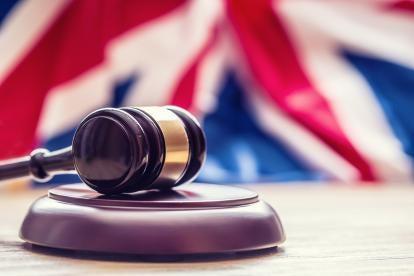For the second in our series on sexual harassment in the workplace, we look at how the law as it currently stands protects individuals from sexual harassment by third parties such as visitors and customers.
Before the relevant provisions were repealed in 2013, the Equality Act 2010 rendered employers liable for harassment of employees by third parties in certain circumstances. If an employer knew that their employee had previously been harassed on at least two occasions in the course of their employment by a third party but failed to take reasonable steps to prevent this, they would be liable for the harassment.
There may be circumstances where, despite the repeal of third party harassment provisions, an employer is nevertheless held liable. However, the victim would have to argue that the employer’s lack of action in response to third party harassment was in itself discriminatory, for example, an employer ignoring the sexual harassment of an employee by a third party for reasons relating to that employee’s gender. Needless to say, this is not the most straightforward argument to run. The Court of Appeal has itself cast doubt over the EA 2010’s ability to protect employees from third party harassment, commenting in Unite the Union v Nailard last year that “there is now no explicit liability on an employer for failing to prevent third party harassment”.
The EA 2010 is not the only legislation in place aimed at protecting individuals from harassment. A possible alternative would be to bring a claim under the Protection from Harassment Act 1997 in the civil courts as opposed to the Employment Tribunal. Under the PHA, “harassment” is defined not very usefully as pursuing a course of conduct that the perpetrator knows or ought to know amounts to harassment of another. There needs to have been a course of conduct, the perpetrator must know or ought to know that their conduct amounts to harassment and the course of conduct needs to have been oppressive, unacceptable and have caused as a minimum alarm or distress.
For there to have been “a course of conduct”, the conduct in question must have occurred on at least two occasions and cumulatively amount to harassment, as opposed to the EA 2010 under which a single incident can constitute harassment. When looking at whether the perpetrator knew or ought to have known that the conduct amounted to harassment, the courts look at whether a reasonable person with the same information at their disposal would think it did. Finally, looking at the nature and effect of the conduct, the courts have ruled it should also be the type of conduct that would sustain criminal liability. This final criterion may rule out sexual harassment that is not sufficiently serious to warrant criminal sanctions, such as the joke in mildly bad taste that would, under the EA 2010, constitute harassment.
That said, the PHA has the same limitations when it comes to employer liability for the acts of third parties. While employers are vicariously liable for PHA harassment by employees, this won’t necessarily be the case for the conduct of third parties. Whether or not an employer is liable for third party conduct would depend on the outcome of the two-stage test set out in our last blog in this series and unfortunately, it unlikely that this test would be satisfied when it comes to third party customers. The PHA enables individuals to bring claims against third-party perpetrators but does not make employers any more liable for the actions of those third parties then the EA 2010. In addition, PHA claims require proof of the state (or deemed state) of mind of the perpetrator, while Equality Act harassment does not depend on any such knowledge or intention and so is easier to prove. PHA claims will be brought in the Country or High Court, which might mean that Legal Aid could be available but in other cases will expose the Claimant to an order for the perpetrator’s or employer’s costs if he/she is unsuccessful. In circumstances where only injury to feelings is in play (i.e. there is no financial loss arising from the harassment), the potential costs exposure could vastly exceed the sums at stake. PHA claims for sexual harassment have therefore been understandably uncommon.
So as it stands, there is little legal obligation on employers to protect their employees from harassment by third parties and this is an issue rightly included in the Government’s consultation. However, the original EA 2010 provisions about this were repealed as being both unnecessary and unworkable in practice and it remains to be seen whether any revised proposals in this respect can do any better.
For our third blog on sexual harassment in the workplace, we’ll be looking at the statutory defence and defending sexual harassment claims.




 i
i


